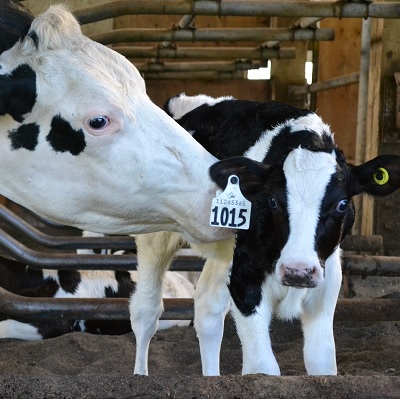
Bond between cow and calf grows deeper when suckling is allowed
August 28, 2020 – A new study from UBC’s Faculty of Land and Food Systems measures how strong a bond develops between a cow and her calf based on the amount of time spent together and whether suckling takes place.
“Previous studies suggested that a strong cow-calf bond can be established even in the absence of suckling,” says Professor Dan Weary. “But our results show another dimension – that the activity of suckling dramatically increases the bond between mother and calf.”
The results published in Scientific Reports, titled Effect of Cow-Calf Contact on Cow Motivation to Reunite with their Calf, outlines research in which cow-calf pairs were divided into three groups:
• Those who spent max. 2 hours together immediately after birth, but did not see each other regularly
• Those who spent 1.5 days together after birth, and reunited each night
• Those who spent 1.5 days together after birth, reunited each night and were allowed to suckle
Cows that were suckled by their calves built the strongest bond compared to those who spent the same amount of time with their calves but weren’t suckled, and those who didn’t spend time with their calves. The bond was measured by seeing how much weight a cow would push to open a gate that provided access to her calf. Cows that was suckled by their calves showed much higher motivation – pushing a weight twice as heavy as those that weren’t suckled.
“Oxytocin, known as a bonding hormone, may be the main reason,” said Margret Wenker, PhD student at Wageningen University & Research, and a co-author of the study. “Oxytocin is known to be increased when a mother feeds her young and it has a rewarding effect – suckling is considered one of the most hedonic maternal activities.”
There was no noticeable difference in motivation between the cows that weren’t suckled and those that didn’t see their calves regularly. Also, all cows showed similar behavior once reunited – licking their calves and being attentive.
On many dairy farms, the calf is removed from the cow soon after birth, but as Weary explains, “Some dairy farmers are interested in trying to keep calves and cows together; our results suggest that an important feature of the cow-calf system is that the cow is able to suckle her calf.”
The study included 34 Holstein cows at UBC’s Dairy Education and Research Centre in Agassiz, British Columbia, Canada.
Click here to watch a video of the research.
For more information, please contact:
Dan Weary
Professor, Animal Welfare Program
NSERC Industrial Research Chair in Animal Welfare
UBC Faculty of Land and Food Systems
Email: dan.weary@ubc.ca